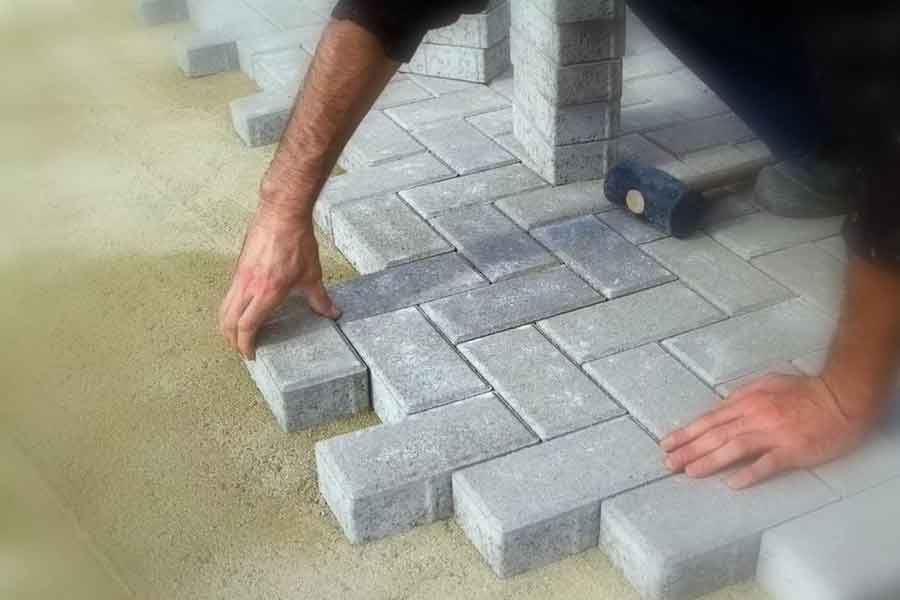Selecting the appropriate material for pavement work is crucial in ensuring durability, aesthetics, and cost-effectiveness. This discussion focuses on two popular choices in Australia: street tile, often referred to as pavers, and concrete tile. A balanced comparison will be presented in terms of quality, durability, and cost, and their suitability for various applications.
Street tiles or pavers, are typically made from clay, concrete, or natural stone. They come in a variety of shapes, sizes, colours, and textures, offering a wide array of design possibilities. These pavers are strong, versatile, and can handle heavy foot and vehicular traffic, making them suitable for various outdoor tiling projects.

Concrete tiles, on the other hand, are made from a mixture of cement, sand, and water. Like pavers, they also come in various shapes and sizes, and can be coloured or textured to mimic the appearance of natural stone, brick, or other materials.
In terms of quality, both materials exhibit excellent performance. Pavers, particularly those made from clay or natural stone, have a unique, high-end appearance. They provide a classic aesthetic appeal that can enhance the visual appeal of a property. Concrete tiles can also look attractive, especially when coloured or textured. However, they may not match the aesthetic superiority of natural stone or clay pavers.
The durability of these materials is determined by their resistance to environmental conditions and mechanical stress. Both pavers and concrete tiles are known for their strength and durability. However, pavers, especially those made from natural stone or clay, tend to be more resistant to wear, chipping, and cracking. They can maintain their appearance and structural integrity for many years, even under heavy traffic and harsh weather conditions. Concrete tiles, while still durable, may show signs of wear and tear faster than pavers.
Paver repairs are relatively straightforward, due to their modular nature. If a paver gets damaged, it can easily be removed and replaced without affecting the surrounding pieces. This modular design also allows for easy access to underground utilities without disrupting the entire pavement. Concrete tiles, being larger and more monolithic, may require more effort and resources to repair. If a tile gets damaged, the repair may be more noticeable than with pavers.
In terms of cost, concrete tiles tend to be more economical upfront. The raw materials and production process are less expensive, making them an affordable option for large areas. Pavers, particularly those made from natural stone or clay, can be more expensive. However, they may offer better value over the long term due to their durability and ease of repair.
Installation cost is another consideration. Laying pavers can be labour-intensive and may require a skilled paving tiler to ensure proper installation. It involves preparing the base, laying the pavers, and filling the joints with sand. Concrete tiles, however, can be easier and quicker to install, which can reduce labour costs.
Maintenance costs should also be taken into account. Pavers may require occasional cleaning and sealing to maintain their appearance, especially if they are made from natural stone or clay. Concrete tiles can also benefit from regular cleaning and sealing to prevent staining and enhance their lifespan.
Both materials are suitable for various applications in outdoor tiling. Pavers are commonly used in driveways, walkways, patios, and pool surrounds. Their non-slip surface and ability to drain water efficiently make them an excellent choice for these areas. Concrete tiles can also be used in these applications and are a popular choice for outdoor living spaces, such as patios and barbecue areas.
In terms of safety requirements, both pavers and concrete tiles need to meet Australian standards for slip resistance and load-bearing capacity. It’s essential to choose a reputable supplier who complies with these standards to ensure the safety and longevity of the pavement. Regardless of the chosen material, professional installation is crucial. Accurate preparation of the base, correct laying of tiles or pavers, and appropriate sealing processes all contribute to the durability, safety, and aesthetics of the finished pavement. While both pavers and concrete tiles have their advantages and disadvantages, understanding their characteristics can guide homeowners, builders, and contractors in making informed choices. Both materials, when used appropriately and installed correctly, can provide a long-lasting, aesthetically pleasing, and functional pavement that enhances the outdoor spaces of Australian homes and buildings.


